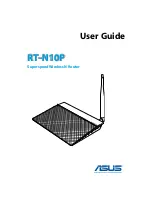
48
Proprietary Information: Not for use or disclosure except by written agreement with Calix.
© Calix. All Rights Reserved.
VLAN tagging and provisioning models
The E-Series provides standards-based VLAN tagging, and Q-in-Q VLAN stacking support.
VLAN tagging was developed as a means to allow multiple networks to transparently
traverse the same physical network.
VLAN-per-service provisioning model (N:1):
When VLANs are provisioned to separate
traffic onto VLANs based on the type of service carried in the traffic. For example, IPTV
traffic is carried on a separate VLAN from data and voice traffic.
VLAN-per-port provisioning model (1:1):
When VLANs are provisioned as a unique
customer or port identifier, VLAN C-tags (customer tag) are utilized to create a VLAN per
customer / port association.
VLAN stacking or Q-in-Q provisioning model:
The ability to add multiple VLAN tags
enables the following functionality:
Expands the addressable VLAN space from 4094 VLANs to over 16 million VLANs
Allows logical separation and trunking of VLANs through a network by using a VLAN
tag to group a larger range of VLAN tags together
The most common way to use VLAN stacking is by inserting two tags on the traffic. These
tags are typically referred to as the inner tag or C-tag and the outer tag or S-tag. As stated
previously, the C-tag, also known as the customer tag is used to uniquely identify a customer,
typically is used on a per port basis. The S-tag, also known as the service-provider tag is used
to logically group C-tags together.
Metro Ethernet Forum (MEF)/Transport LAN (TLAN) business service models:
MEF/TLAN service can transparently trunk business traffic across a network to other
locations, typically a remote office or secondary business location. The traffic received from
the business may be untagged, single-tagged, or double-tagged. The E-Series adds an outer
tag to all frames to create a private switched LAN with two or more end points.
Calix VDSL2 service model
When a service is provisioned at an xDSL port, a match list and service-tag action specify the
classification and marking of packets from the subscriber port into the service VLAN.
VLAN-per-service provisioning model (N:1):
A service carried on an N:1 VLAN applies
to multiple subscriber ports, where a single match list and tag action can indicate the service.
VLAN-per-port provisioning model (1:1):
A service carried on a 1:1 VLAN is the same
for each subscriber except the customer tag is unique per subscriber, you can define the
match list and tag action pair such that multiple subscriber ports can reference it. This is
accomplished by having a special value for the output tag in the tag action, indicating that the
value of the output tag is subscriber specific. The customer-specific tag is contained in the
Service object.
















































